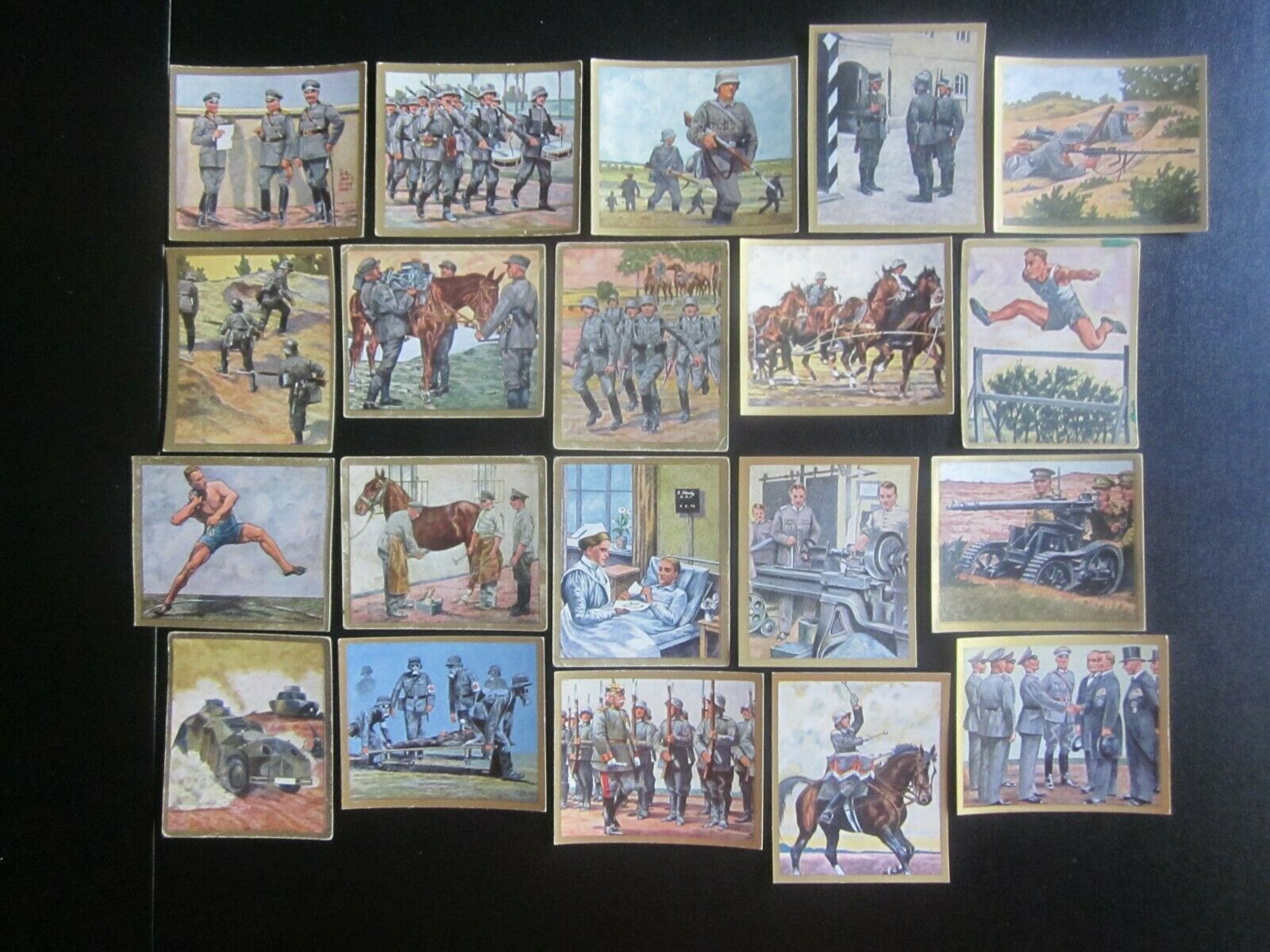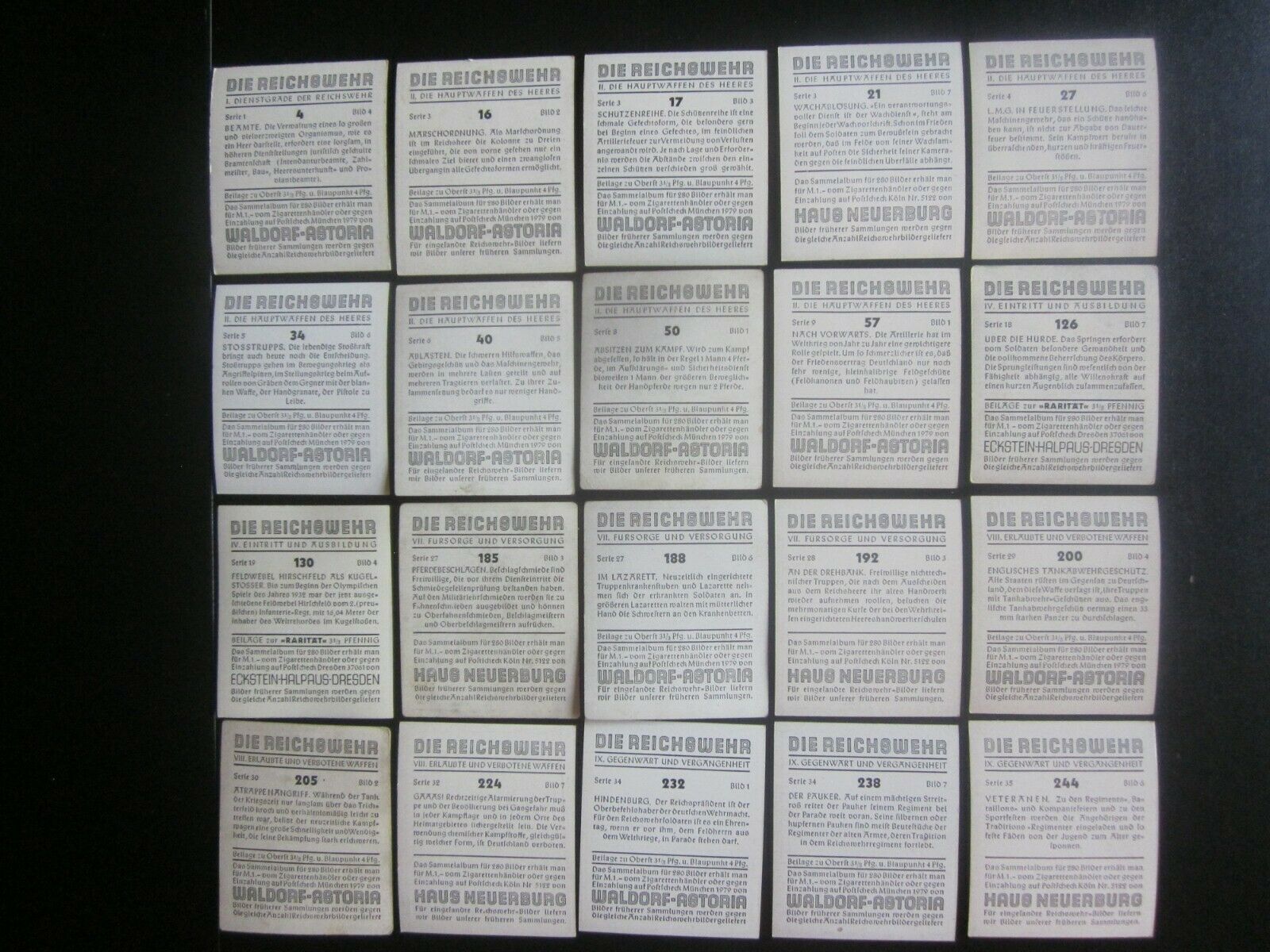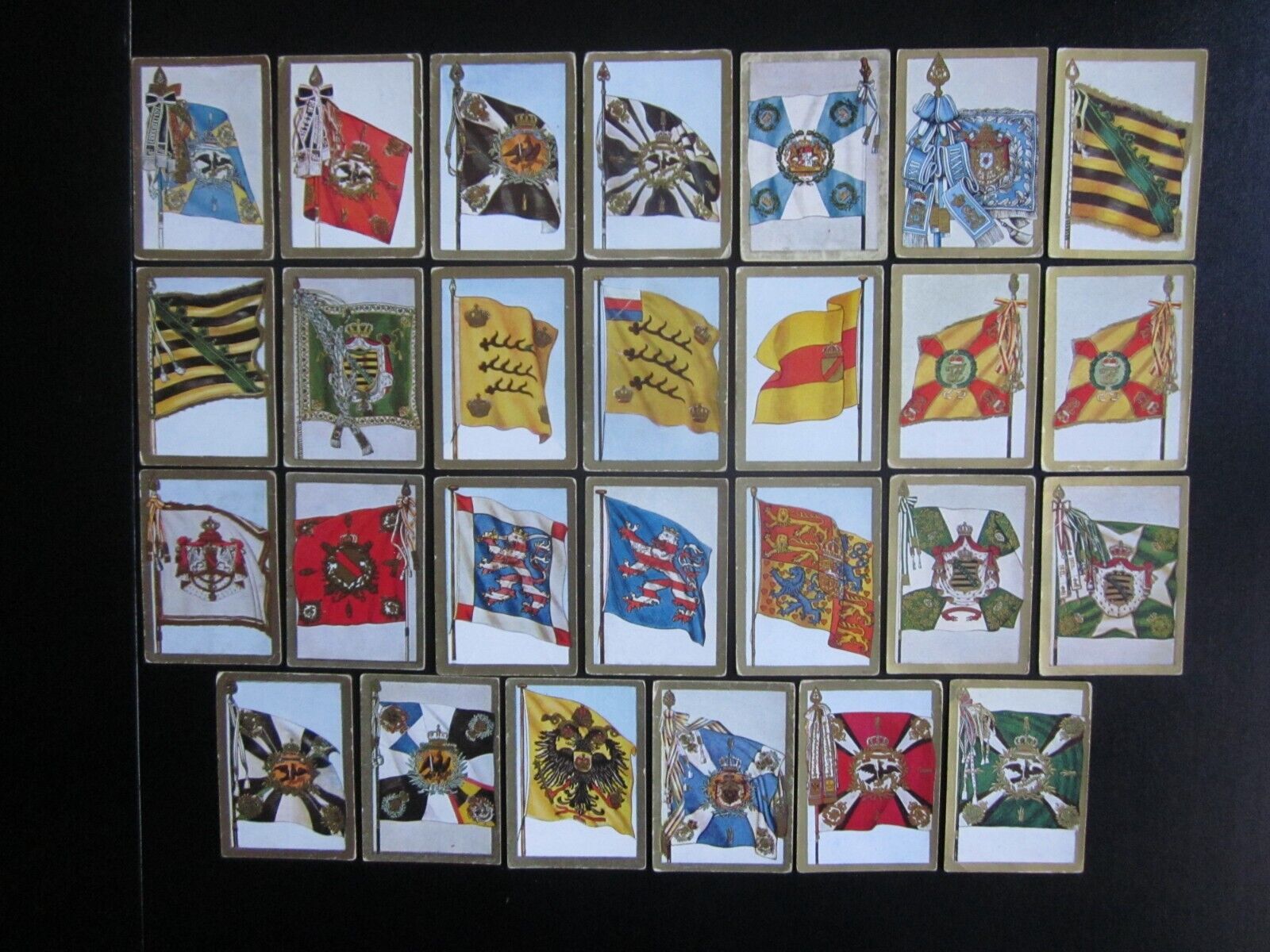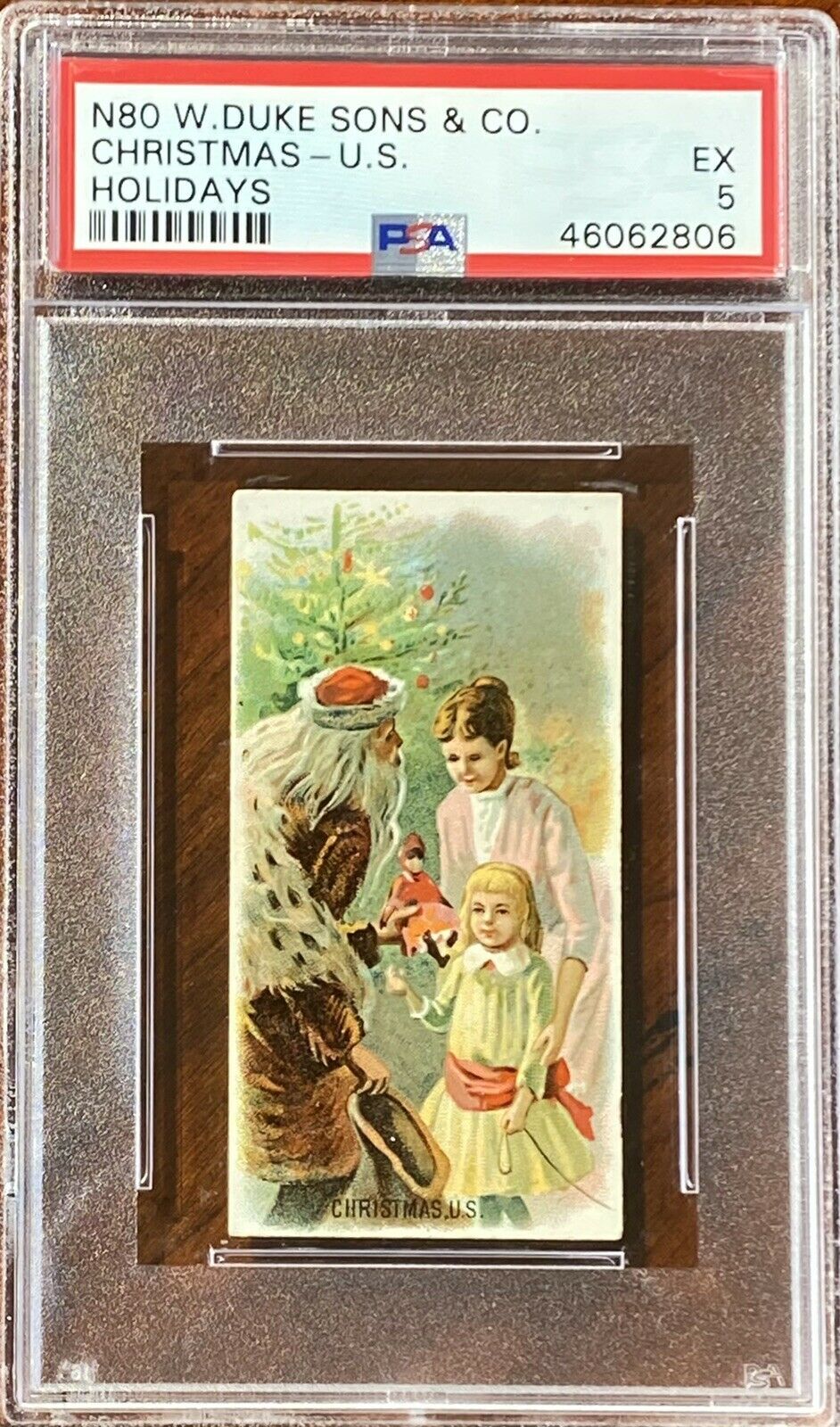-40%
20 color German cigarette cards of the German Army, issued 1933
$ 2.64
- Description
- Size Guide
Description
Offered here are 20 original German cigarette cards of the German Military in the early 1930s, issued in 1933 by the Waldorf-Astoria Cigarette Co. and the Haus Neuerburg Cigarette Co. for the albumDie Reichswehr
(The German Military). Pictured here are:
No. 4:
Military Officials. To oversee a large organization like an army requires many officials trained in military law and other skills.
No. 16:
Oder of Marching. The normal order of marching in the Reichswehr is a column of three across. From the front this column presents a small target for the enemy, yet it can be quickly reformed into any number of fighting configurations.
No. 17:
Infantry Column. This is often used at the beginning of a battle in order to reduce the number of casualties due to artillery fire. the distance between individual soldiers can vary, depending on the circumstances facing them.
No. 21:
Changing of the Guard. "Guard duty is one of high responsibility." These words introduce the rules concerning guard duty. In training during peacetime the guards are reminded that during wartime the safety of their comrades in arms depends on their attentiveness that can prevent surprise attacks by the enemy.
No. 27:
A Light Machine Gun Ready to Fire. The light machine gun can be carried and handled by a rifleman, but it is not meant for heavy sustained fire. Its main value lies in short, surprising and powerful bursts of fire.
No. 34:
Assault Troops. Forming the point position of the attack, these troops essentially determine the success or failure of the attack. In trench warfare they are often the troops that clear out the opposing trenches, often with pistol and hand grenades.
No. 40:
Unloading Heavy Equipment. Heavy weapons, such as the mountain gun and the machine gun, have to be transported in mountainous terrain in parts, so that the load is not too great for the transporting animal. However, these guns are so designed that they can be put back together quickly.
No. 50:
Dismounting to Fight. If cavalry dismounts to fight, one man remains behind for every four horses. During recon patrols one man remains with every two horses in order to enable a quick mounting and departure, if necessary.
No. 57:
Moving Forward. Each year in World War I the artillery had taken on greater and greater importance. Therefore, it is very concerning that the Versailles Treaty permitted Germany relatively few field guns and only smaller calibers.
No. 126:
Over the Hurdle. Jumping over things requires much coordination and perfect body discipline. The ability to jump well comes down to concentrating one's will power for one moment's burst of action.
No. 130:
Sergeant Hirschfeld Throwing the Shot. Up to the start of the 1932 Olympics the world record shot put of 16.04 meters was held by Sergeant Hirschfeld, who has since retired from the army.
No. 185:
Shoeing the Cavalry Horse. A blacksmith in the military is usually someone who was an apprentice in the trade before entering the army. His training continues in the army and he can achieve “master” status there.
No. 188:
In the Base Hospital. Modern medical facilities are important for the functioning of the army. And equally important are the caring nurses who see after the sick soldiers.
No. 192:
Working at the Lathe. After their time of service is done, soldiers who were not part of technical or engineering units can attend schools set up by the army to teach former soldiers a trade.
No. 200:
An English Anti-Tank Gun. All nations except Germany are equipping their troops with modern anti-tank guns such as the British model pictured here which can penetrate 33 mm of armor.
No. 205:
Armor Attack. While the first tanks were slow and rather easy to hit, today’s tanks are much faster and agile, making defense against them more difficult.
No. 224:
Gas Attack! A warning system to alert troops and civilians of an impending gas attack must be organized wherever the danger is possible. Since the Versailles Treaty Germany is forbidden from producing any such gases
. No. 232:
Hindenburg. The Reichspresident is the Commander-in-Chief of the German military. And for the German soldier it is a particular honor to march before this war hero in a parade.
No. 238:
The Kettle-Drum. The man playing the kettle drum sits on a powerful warhorse and rides far ahead of his marching unit. His drum is made of silver or copper won from past wars and its use continues a great tradition of the Old Army.
No. 244:
Veterans. Former members of a regiment, battalion or company are often invited to celebrations or athletics competitions of those units in order to form a bond of brotherhood between the new and old members of the units.
On the back of each card at the bottom are directions on how people collecting these pictures in the 1930s could get the album for the pictures. The cards from the Waldorf-Astoria Co. read: "You can get the album for 1 Reichsmark at any cigarette store or by paying this amount to the following Post Office checking account: Munich 1979." Please note: the number "1979" here is
not
a date/year, but a postal account number.
Each picture measures 2 and 3/8 inches by 2 inches.
With multiple purchases, please wait for invoice for reduced postage.










